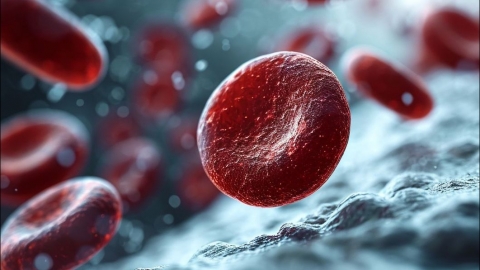Causes and Treatment of Thrombocytopenia
Thrombocytopenia may be caused by factors such as women's menstruation, physical activity, pregnancy, idiopathic thrombocytopenic purpura, aplastic anemia, and others. It can be improved according to the specific situation. It is recommended to visit a hospital promptly and receive treatment under the guidance of a physician.

1. Menstruation in women: During the menstrual period, women may experience physiological thrombocytopenia, often accompanied by heavier-than-usual menstrual bleeding. This is a normal physiological phenomenon that typically does not require specific treatment. Adequate rest, avoiding fatigue, and consuming iron-rich foods such as animal liver and spinach are recommended. Platelet counts usually return to normal after the menstrual period ends.
2. Physical exercise: Following intense physical activity, accelerated blood circulation may cause platelets to distribute toward the edges of blood vessels, resulting in a relatively decreased platelet count in peripheral blood. Counts generally return to normal after rest. It is important to replenish fluids after exercise to maintain hydration, avoid sudden standing to prevent discomfort caused by orthostatic hypotension.
3. Pregnancy: During pregnancy, an increase in blood volume may dilute platelet concentration, leading to a temporary decrease in platelet count. Thrombocytopenia during pregnancy generally does not result in significant bleeding tendencies. In most cases, no specific treatment is required, and platelet levels typically return to normal after delivery.
4. Idiopathic thrombocytopenic purpura: This condition is caused by the immune system mistakenly attacking platelets, leading to increased platelet destruction. Symptoms include skin petechiae, ecchymosis, gingival bleeding, epistaxis, and others. Patients may take medications such as prednisolone tablets, dexamethasone tablets, and recombinant human thrombopoietin injection under a physician's guidance to increase platelet counts.
5. Aplastic anemia: Due to bone marrow failure in producing blood cells, there is a reduction in all blood cell types, including platelets. Patients may experience symptoms such as anemia, infection, and bleeding, including pallor, fatigue, fever, and skin bruising. It is recommended to take medications such as cyclosporine soft capsules, stanozolol tablets, and testosterone undecanoate capsules under the guidance of a physician to alleviate symptoms.
In daily life, maintaining a light diet and ensuring balanced nutrient intake are recommended to support overall health.








